#womenofislam
Text
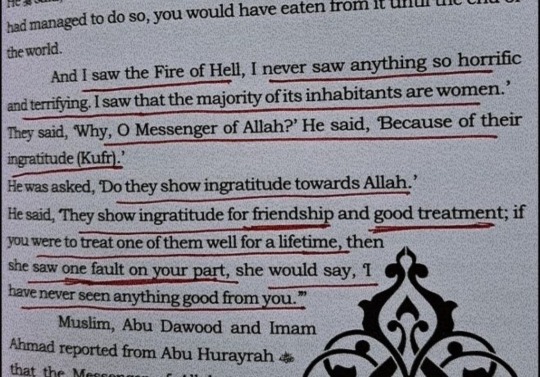
May Allah NEVER include us among those who are ungrateful❗️
13 notes
·
View notes
Text

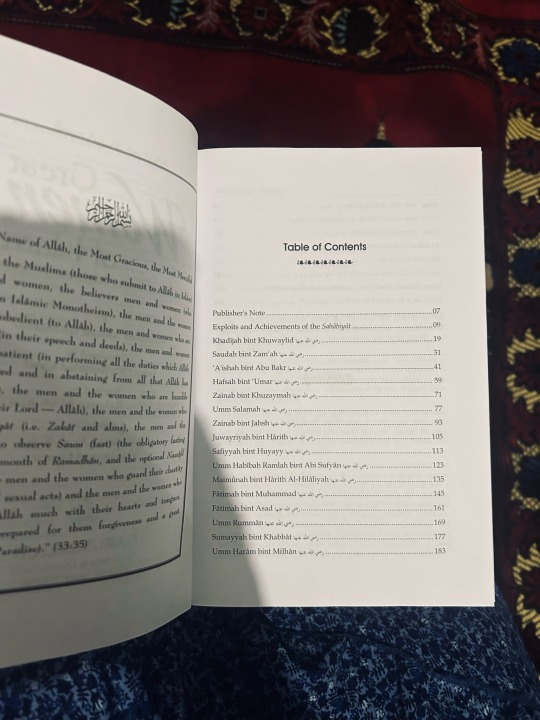
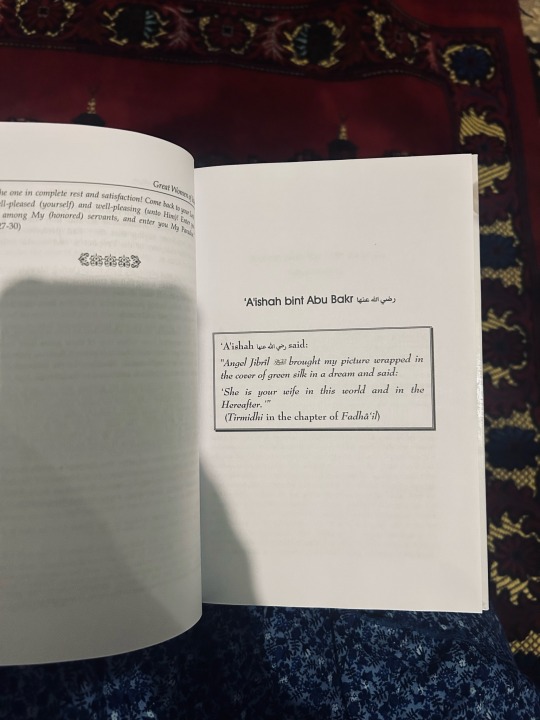
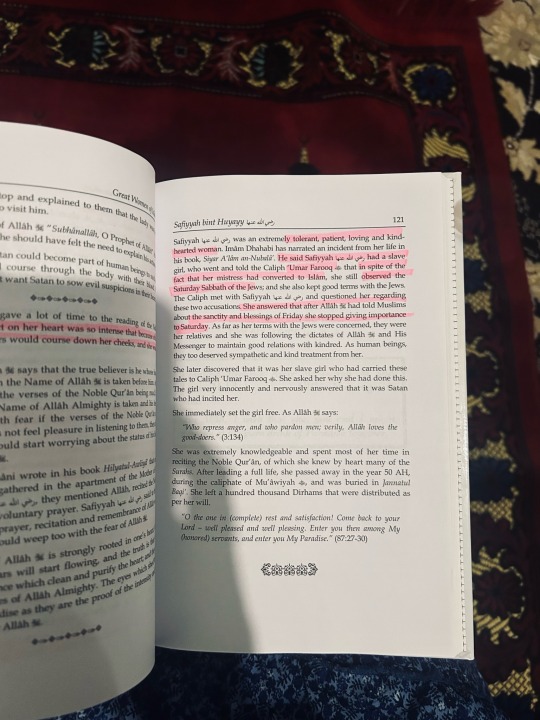
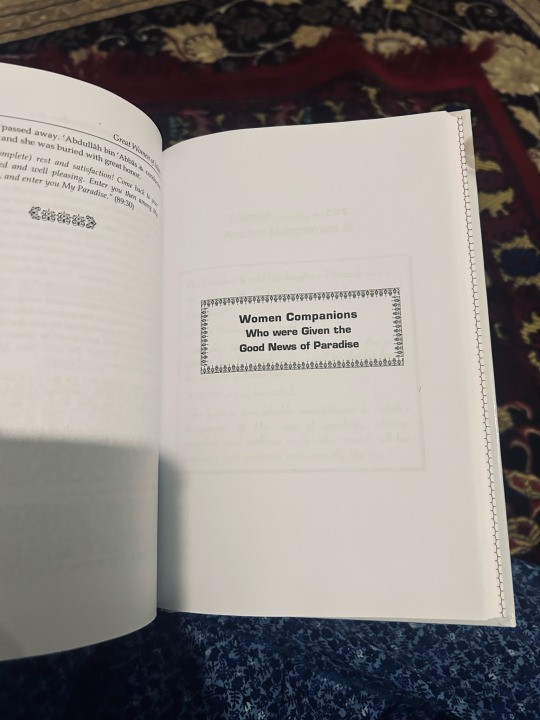
Book review - The Great women of Islam by Mahood Ahmed Ghafanfor
This was one of the first box I added to my collection.
It is an excellent book for any muslimah, and gives us a deep inside into the lives and roles of female companions, wife’s and a strong/pious figures throughout the Islamic history.  This book is extremely easy to read, and it’s broken down into small chapters, describing the life and key points of each woman, also includes fully referenced Hadith.
This book does not go into a very deep explanation of each female figure, instead it gives a 4 to 6 page overview, making it concise, manageable and great for a new beginner.
I purchased this from Darussalam books online.
#aqeedah#islam#books#book review#islamquotes#islamicposts#islamification#islamiyet#revert#muslim#womenofislam#muslim women
3 notes
·
View notes
Photo

It’s amazing all the love I have received from the Muslim community being a revert ❤️ #newmuslims #islam #reverttoislam #womenofislam #loveislam https://www.instagram.com/p/B1OgDt9Ay6k/?igshid=1jjg1ymn0hecn
4 notes
·
View notes
Text
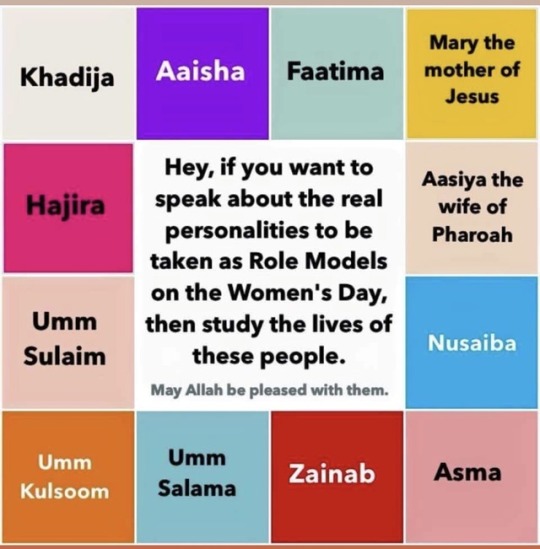
My heroes. ❤️ Find strength in knowing & studying what these women went through & accomplished & that our faith is enhanced through their contributions. May God be pleased with all of them.
12 notes
·
View notes
Video
Sheikh Saalih Al fawzaan (حفظه الله) speaks about women driving. Part 1 #islam #islamic #muslim #muslimah #quran #quranic #islamicquotes #salafi #importance #followthesunnah #thawheed #oneness #allah #allahuakbar #allahisone #worshipallah #womenofislam #womendriving #islamicwomen #sheikh #sheikssalihalfawzaan #honour https://www.instagram.com/p/Bn24lYah3Do/?utm_source=ig_tumblr_share&igshid=7uqwafx2d31u
#islam#islamic#muslim#muslimah#quran#quranic#islamicquotes#salafi#importance#followthesunnah#thawheed#oneness#allah#allahuakbar#allahisone#worshipallah#womenofislam#womendriving#islamicwomen#sheikh#sheikssalihalfawzaan#honour
1 note
·
View note
Text

Ladies, be patience like Sittie Ashiya and be steadfast like Mariam bint Imran. May Allah swt be pleased with them and be the happiest woman in the world.
It was narrated in a hadith that Prophet Mohammad Peace be upon him said, there is no woman who attained perfection other than Ashya bint Muzahim and Mariam bint Imran. Mashaa Allah. Allahuakbar.
#women#womenofislam#sittieashya#sittiemariam#islam#iloveislam#islampeacelove#islamic history#islamicqoutes#islampost#muslima#ukhtifillah#ukhti#islamicbook#islamic books#books#booklover#bookish#bookaddict#bookworm
1 note
·
View note
Photo
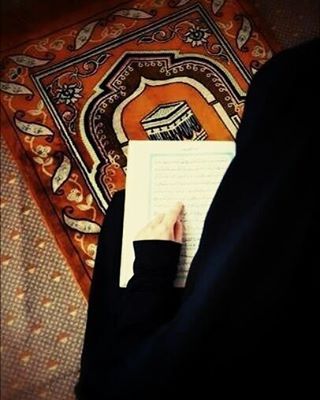
ASYA BINT MUZAHIM Asya believed in Prophet Musa’s message and she held firm to her faith. That faith was so strong that she was willing to die for it. When Firaun found out that she believed, he tortured her severely. But her belief in Allah was so strong that it made her an everlasting symbol. Link on bio 👆 #muslimreminder #islam #imaan #ibadah #lovefordeen #practicingmuslim #jannahgoals #destinationjannah #womenofislam #asyabintmuzahim #belief #strongimaan #keepfaith #stayhumble #trustAllah #tawba
#keepfaith#strongimaan#ibadah#womenofislam#trustallah#asyabintmuzahim#jannahgoals#muslimreminder#belief#imaan#stayhumble#destinationjannah#islam#tawba#lovefordeen#practicingmuslim
0 notes
Photo
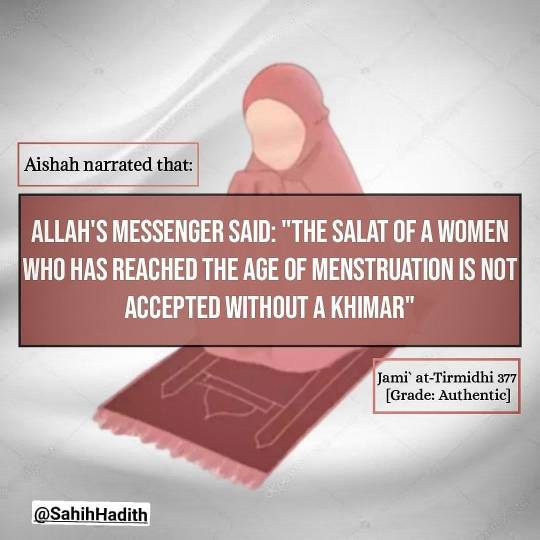
🔹Aishah (Rah) narrated that: Allah's Messenger said: "The Salat of a women who has reached the age of menstruation is not accepted without a Khimar" عَنْ عَائِشَةَ، قَالَتْ قَالَ رَسُولُ اللَّهِ صلى الله عليه وسلم " لاَ تُقْبَلُ صَلاَةُ الْحَائِضِ إِلاَّ بِخِمَارٍ " . قَالَ وَفِي الْبَابِ عَنْ عَبْدِ اللَّهِ بْنِ عَمْرٍو . وَقَوْلُهُ " الْحَائِضُ " . يَعْنِي الْمَرْأَةَ الْبَالِغَ يَعْنِي إِذَا حَاضَتْ . Grade: Sahih (Darussalam) : Jami` at-Tirmidhi 377 : Book 2, Hadith 229 : Vol. 1, Book 2, Hadith 377 . . . @Sahih.Hadith_ ➡️Instagram account . . . .@SahihHadith (Telegram Channel ) . . #bukhari#muslim#sahihhadis#sahihbukhari#sahihmuslim#attirmidih#abudawood#islam#islamicreminders#muslimreminder#sunnah#prophet#muhammadﷺ#instamuslim#hafithoftheday#hadiths#share#sunnah#sunnahofprophetpbuh#gemsofislam #muslimummah #womenofislam #forgiveness#repentance#deen#allahmercy#allah#ramdanhadith#workingforjannah #islamicguidance#islam#islamicquotes https://www.instagram.com/p/CQujvkZlRzA/?utm_medium=tumblr
#bukhari#muslim#sahihhadis#sahihbukhari#sahihmuslim#attirmidih#abudawood#islam#islamicreminders#muslimreminder#sunnah#prophet#muhammadﷺ#instamuslim#hafithoftheday#hadiths#share#sunnahofprophetpbuh#gemsofislam#muslimummah#womenofislam#forgiveness#repentance#deen#allahmercy#allah#ramdanhadith#workingforjannah#islamicguidance#islamicquotes
0 notes
Link
#boy #boys #girl #girls #child #children #ChildOfGod #ChildrenOfGod #family #FamilyOfGod #husband #wife #bride #groom #bridesmaid #maid #WomenOfIslam #MenOfIslam #WomanOfIslam #ManOfIslam #BoyOfIslam #hadith #Ahmadi #shia #suni #nike #run via Instagram http://ift.tt/2sY6ZPP
0 notes
Text
Response to “To Veil or Not to Veil” by: Ylldes Mustafa
I am a white, unveiled Muslim woman living in America. When you look at me, you will not see the stereotypical “Muslim woman,” and to most, I look “normal.” Because I do not wear the headscarf and dress in mostly Westernized clothing, I feel as though I am given more opportunities to further and better my life as a woman who does choose to wear a headscarf.
I am choosing a career in news broadcast journalism. I am aspiring to be an anchor on a major news broadcast network. A lot of professors, counselors and employers have helped me further my career in this business by offering me different job positions. But I ask myself—would I be in such a position if I chose to wear a headscarf? Would I be perceived as the person I put forth? Kahn describes the headscarf as a symbol of oppression and to many that may seem true. If I am a woman in Afghanistan living under Taliban rule, I am forced to wear not only a headscarf, but a whole burqa covering me head to toe with a slit for my eyes. To me, that is oppression because you have stripped the woman of a freedom just because she is a woman. If I am a woman living in Afghanistan before Taliban rule and willingly wore a headscarf, then that is not oppression.
In Westernized countries, when one decides to rebel against social norms, such as wearing a headscarf, most people will ridicule and find a reason to label that as “different,” or in the veiled Muslim woman’s case, as “oppressed.” There is no concern for the veiled, Muslim woman’s personal religious beliefs while living in the “land of the free.” Amongst the veiled, Muslim women, lies people such as Donald Trump and ISIS thugs whom threaten the religious security of this woman. Mr. Trump will label veiled women as oppressed and also as terrorists whereas ISIS will oppress the women by using their religion to take away the freedoms these women possess.
0 notes
Video
Sheikh Saalih Al fawzaan (حفظه الله) speaks about western culture and harms of it. Part 3 #islam #islamic #muslim #muslimah #quran #quranic #islamicquotes #salafi #importance #followthesunnah #thawheed #oneness #allah #allahuakbar #allahisone #worshipallah #womenofislam #westernculture #islamicwomen #sheikh #sheikssalihalfawzaan #honour #protectthewomen #savetheyoungsters https://www.instagram.com/p/Bn2_sgoBRVS/?utm_source=ig_tumblr_share&igshid=1xl9rj6umxb7h
#islam#islamic#muslim#muslimah#quran#quranic#islamicquotes#salafi#importance#followthesunnah#thawheed#oneness#allah#allahuakbar#allahisone#worshipallah#womenofislam#westernculture#islamicwomen#sheikh#sheikssalihalfawzaan#honour#protectthewomen#savetheyoungsters
0 notes
Photo

Do not spoil the purity of love by involving in haram relations. Get married, make it halal. The perfect love story is the one which continues in Jannah! [Tumblr] #muslimreminder #muslim #islam #imaan #ibadah #tawba #lovefordeen #practiseislam #keepfaith #keepithalal #noharamrelations #spreadthepeace #destinationjannah #womenofislam #proudmuslim
#keepfaith#tawba#ibadah#proudmuslim#womenofislam#practiseislam#muslim#muslimreminder#spreadthepeace#imaan#destinationjannah#noharamrelations#keepithalal#lovefordeen#islam
0 notes
Photo

@Regrann from @live_your_lifewith_islam - #quran #tajwid #holyquran #holyquran #womenofislam #alquran #yaallah #ohallah #blessings #religion #truelove #method #simple #supplication #islam #quotes #Regrann
#womenofislam#regrann#quotes#quran#simple#supplication#truelove#religion#holyquran#blessings#islam#tajwid#yaallah#method#ohallah#alquran
2 notes
·
View notes
Text
A mothers love
To my mother i owe the world. What i want to give back is the love that you bestowed upon me. What can a son need than a mothers love. NOTHING. That is why i dedicate my life to Islam and to make my mother live the good life. She deserves it because she is like a flower in the desert. Gave life to a family that needed that flowers love and caring. She is my light, my guiding star and the one i look up to. I thank God and also inshallah hope my mother lives to be happy to see the man she took into this world. Love The son that always appreciated you.
1 note
·
View note
Text
The Politics of Passing: The Construct of the Unveiled White Woman as Free, Ideal and Liberated
To veil or not to veil in Canada? To what extent will we continue to assign identities to particular appearances? The veiled Muslim woman is othered in Canadian society. She is a symbol of difference. She is assumed to be a product of a controlling man and ultimately, outsiders view her life dominated strictly by religion and none else. Shahnaz Khan offers a concept of the ‘Muslim woman as a construct’. To this we will add a Canadian context. The veil, she states, is the main object of stereotyping and symbolizes Muslim women’s oppression (Khan, 146). Patricia Jeffrey describes a veiled woman as "anonymous, a non-person, unapproachable, just a silent being skulking along, looking neither left nor right" (Khan, 146). In Canadian society, the proper solution to ‘liberate’ the Muslim woman is for her to unveil.
Jeremy Webber, Professor of Constitutional Law at McGill University stated that “the hejab is a betrayal of French identity in Quebec… People should leave these badges of identification behind them when they enter the public sphere and act like any other French person” (Khan, 148). This assimilationist attitude encourages fundamentalist ideals and ultimately dismisses all other cultures that do not pertain to the dominant ideal. Its aim is to strip people of their cultures and identities and assimilate themselves into the dominant culture which represents freedom and the right way of life. The proposed policy is based strictly on appearance and prejudicial beliefs of that appearance categorizing it as ‘different’, ‘other’, ‘wrong’, ‘backward’ which has no place in Canadian society. Where do we draw the line of assigning an identity to a veiled woman? That she is different, oppressed, and voiceless? Moreover, how do we account for women passing as White and ideal who share the same religion as the veiled woman, to which I like to call the ‘Construct of the unveiled White Woman?’ Consider this:
I am White. I am female. I am a Canadian citizen. My name is Irish. I wear my hair down. I do not dress symbolically of my culture or faith. Nothing about me screams Muslim, though I am. I reap the benefits of White privilege while witnessing injustices my covered-up Muslim friends experience. An ‘Us and them’ framework arises within my own religious community: the unveiled, liberated Muslim woman and the veiled, oppressed Muslim woman. Where do these two categories of women unite in dominant Canadian culture?
We must address the issue of appearance and identity as they are both distinct concepts. Faith goes beyond what an individual looks like and what an individual represents. There are groups encouraging the unveiling of the Muslim woman and there are also those who promote the hejab as a symbol of "authenticity" for the Muslim woman. Voices of Islam, a Canadian film, portrays only women who wear the hejab as Muslim (Khan, 151). This leaves thousands of Muslim women in Canada unrepresented as the hejab is not incorporated in their daily dress. This Islamic community only allows a specific type of Muslim woman which further isolates different Muslim women, ultimately upholding dichotomies of White, unveiled liberated woman and non-White, veiled, oppressed woman. It encourages free reign to the White Muslim woman to experience life without restriction while she watches her Muslim sister racialized by a hierarchal understanding of the veil.
Shahnaz, Khan. The veil as a site of struggle: the Hejab in Quebec. Canadian Women Studies (15:2/3) Spring/Summer 1995, 146-152. 1995:
http://literature.proquest.com.ezproxy.library.yorku.ca/searchFullrec.do?id=R04262379&area=criticism&forward=critref_fr&queryId=2915283052315&trailId=152C7B5CB74
0 notes